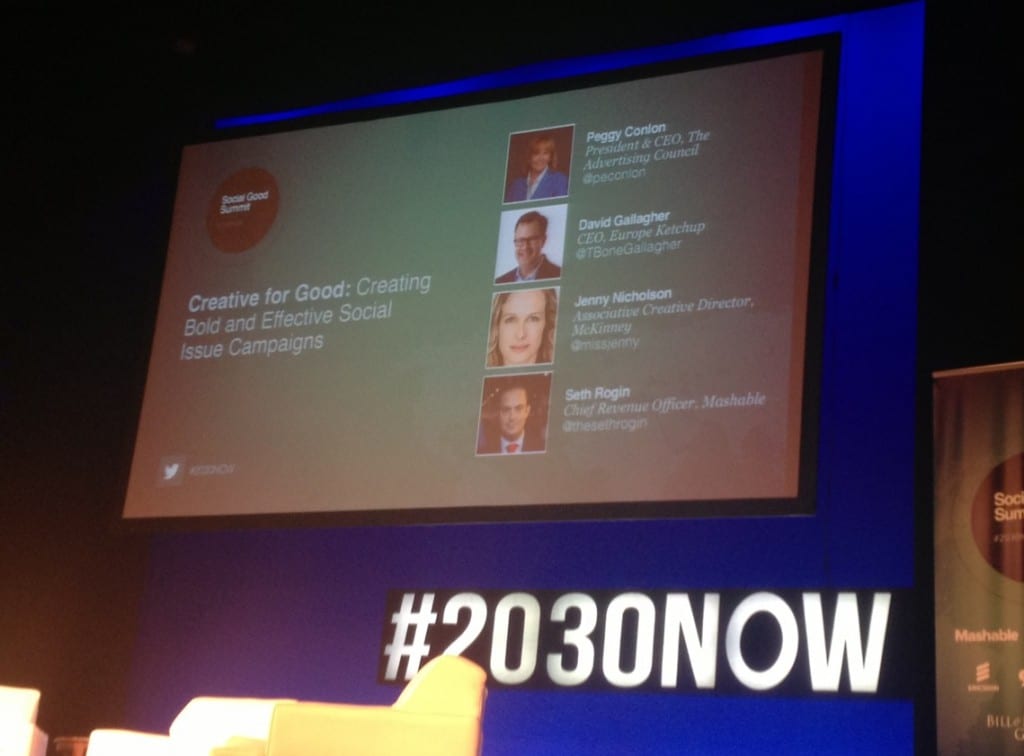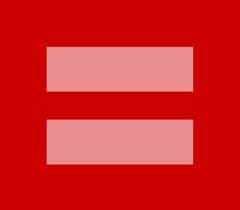 “Sitting around and worrying about an issue does not solve anything,” Jody Williams, chair of the Nobel Women’s Initiative, exclaimed. Her words reverberated throughout the auditorium as I tried to make my way down the aisles of intent listeners who were fervently tweeting, updating statuses, regramming filtered photos and publishing blog posts.
“Sitting around and worrying about an issue does not solve anything,” Jody Williams, chair of the Nobel Women’s Initiative, exclaimed. Her words reverberated throughout the auditorium as I tried to make my way down the aisles of intent listeners who were fervently tweeting, updating statuses, regramming filtered photos and publishing blog posts.
Mashable hosted its second annual Social for Good Summit in NYC, replete with live streaming of its events in other locations throughout the world. I walked into a session called “Women Leaders Cultivating Long-term, Systemic Solution to Climate Change,” where each speaker in the all-women panel ardently expressed that the time for change is now. As I perused the agenda of thought leaders it was clear that this gathering was the perfect platform upon which to win the hearts of philanthropists, advocates, activists and idealists alike. The auditorium represented the intersection of social issues and new media.
 Social media has become most initiatives’ greatest asset. With the aide of digital mavens, any campaign could easily become the next big movement that could win the support of many. For instance, during the U.S. Supreme Court ruling over the much debated topic,the future of same-sex marriage, the Human Rights Campaign urged its followers to update their profile photos to a pink-on-red equal sign to show their support for marriage equality. The trend garnered a significant increase of updated profile photos during that period, illustrating how digital empowered its supporters to feel like a part of the cause.
Social media has become most initiatives’ greatest asset. With the aide of digital mavens, any campaign could easily become the next big movement that could win the support of many. For instance, during the U.S. Supreme Court ruling over the much debated topic,the future of same-sex marriage, the Human Rights Campaign urged its followers to update their profile photos to a pink-on-red equal sign to show their support for marriage equality. The trend garnered a significant increase of updated profile photos during that period, illustrating how digital empowered its supporters to feel like a part of the cause.
In a similar vein, in 2012, breast cancer foundation, Susan G. Komen, announced its decision to defund reproductive health care provider Planned Parenthood, sparking a massive public outcry. Within 24 hours of the announcement, the foundation received a deluge of backlash that resulted in an outpouring of generous online donations for Planned Parenthood. With the help of digital media, we’ve come to realize that our community, friends, and followers have solidarity on many of the same social issues. Jenny Nicholson, Associate Creative Director of McKinney, pointed out during the session, “Creative for Good: Creating Bold and Effective Social Issue Campaigns,” that this phenomenon wasn’t even around 10 years ago, has now become so powerful.
So powerful, in fact, social media-powered campaigns inspired movements around the globe in the last 3 years wherein ordinary people have been dubbed heroes for bringing down the fall of present day tyrannies and shedding light on injustices using digital platforms as their main mode of disseminating information. It was during the Occupy Movements and the Arab Spring when we truly realized the influence of social media in mobilizing a global community to care about an issue. The world took notice and the media wasted no time in venerating these heroes for their efforts with Time Magazine naming The Protester its 2011 Person of the Year.
But as we’ve learned in most stories involving a hero, is that with this great power, comes great risk and responsibility. We are standing at the precipice of a new frontier in which we must determine how to best utilize digital tools for the greater good and how they can possibly change the trajectory of human history.This interconnectivity that the new media propels both heightens our sensitivity to problems as well as illustrates how we can be part of thesolution. For example, we’re learning how a water crisis in one part of the world can indirectly affect us, causing dire consequences that are much closer to home. We need to remind ourselves that we have innovative and creative tools at our disposal. But that’s what they are, just tools. They are simply the means of telling the stories.
The Social Good Summit demonstrated how we are all empowered to leverage social and digital tools toward a progressive and open conversation about social issues. As story tellers, it is our moral imperative to make strides in sharing the right stories that can lead us toward a better, sustainable future. If there’s anything the advent of social media taught us, we all have a voice and we must use that to ignite our passion and mobilize people to action. Ultimately we are all part of the same human story, and it’s up to us to share it, even if it’s only 140 characters segments.


